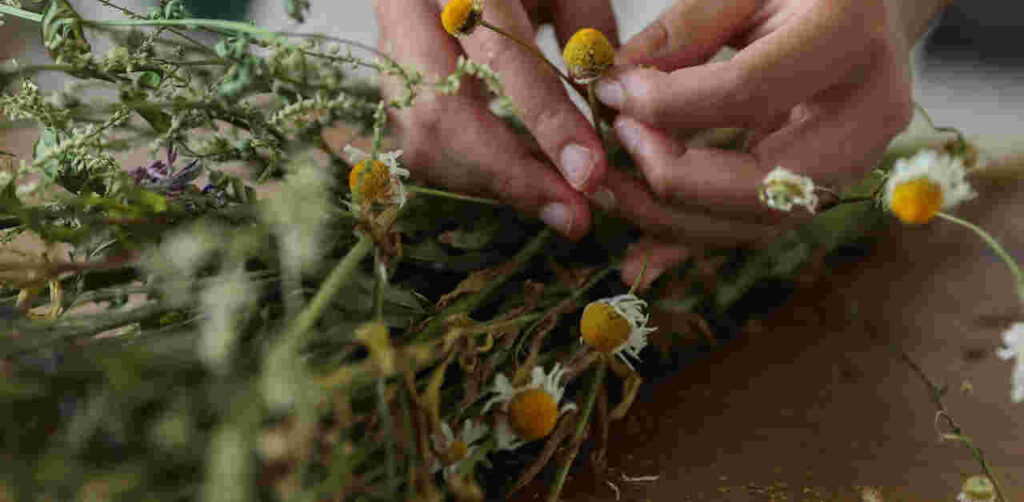Published by: Almanac
What is a Medicine Garden?
In all reality, all gardens are medicine in one way or another. Simply gazing at beauty is medicine all in itself. Today, we’re talking about medicine in a more traditional sense. We can grow herbs that offer real medicinal benefits to us. Think of it as a blooming apothecary.
Starting your own medicinal garden is an invitation to deepen your intuitive wisdom around what your body needs. Even the process of planning the garden invites us to look at our needs and our family’s needs. When we take the step to create a medicine garden, we are stepping into our responsibility for our well-being in a physical way. When we do this, we are often rewarded with something so much deeper than a beautiful garden. We are rewarded with health independence.
Six Herbs to Start Your Medicine Garden
Calendula. This herb grows as an annual and is incredibly easy to germinate and keep alive. Her blooms are her medicine and the more you harvest Calendula, the more blooms she gives you!
Chamomile. One of the most well-known herb flavors, Chamomile (Matricaria Recutita) might already be a favorite in your home. She is known for helping to soothe a tummy ache (especially for children because of her sweet flavor) and helps to calm the nervous system and help with sleep.
Garlic. Garlic’s flavor is unmatched and can elevate just about any dish. The real magic comes in the medicine of this bulb. Garlic offers anti-bacterial, antiviral, and antifungal properties, making her the perfect remedy for colds, flu, or stomach bug.
Lemon balm. Lemon balm (Melissa Officinalis) is a perennial and will spread so wherever you plant her, she will most likely take over so allow her to have her own space. Once you begin using her though, you will be happy to have more of her. Lemon balm will bring a bright lemony flavor to any herbal tea and she offers some impressive medicine. When used on a regular basis, Lemon balm can help lift a mood and even help with depression. She also has anti-viral properties so she can be helpful for viral infections.
Tulsi. Also known as Holy Basil, Tulsi has been a sacred plant in the Hindu religion for thousands of years. Known as the Queen of herbs, Tulsi holds a title that only a few herbs in the world hold…adaptogen. This means she helps the body adapt both physically and mentally to stress.
Yarrow. Yarrow (Achillea millefolium) is so easy to take care of and will come back year after year. She is so multifaceted that if you just grew Yarrow, you would cover a lot of bases as far as medicine goes. Internally, she can help move a fever along. She supports the lymphatic system, the urinary tract, and even the gut. She can also help to balance the menstrual cycle.
So, let’s review what just these 6 herbs offer as medicine.
- Skin healing – Calendula
- Gut soothing – Calendula
- Throat soothing – Calendula
- Support nervous system – Chamomile
- Support sleep – Chamomile
- Prevent and treat cold and flu – Garlic
- Emotional support – Lemon balm
- Stress and adrenal support – Tulsi
- Wound healing and stop bleeding – Yarrow
- Fever support – Yarrow
- Lymphatic support – Yarrow
- Urinary support – Yarrow
Now, of course, the medicine listed are simply the highlights of these herbs. Like humans, they have so many attributes and potential medicine. I encourage you to dive deeper into any herb you choose to grow to learn as much as you can – that’s part of the fun!
